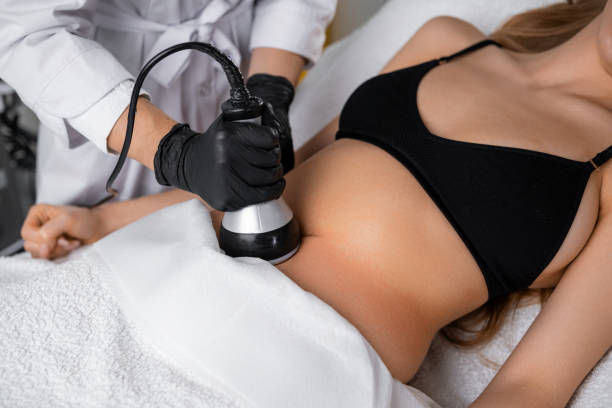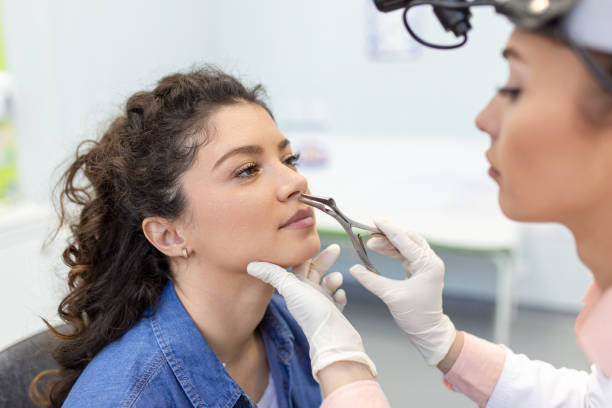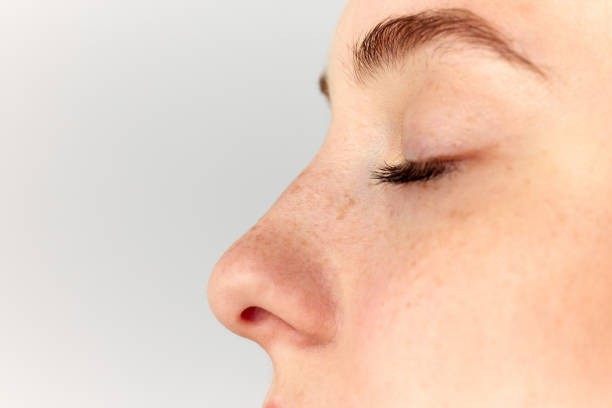
by bilalraja1 | Sep 18, 2025 | Health
Breast reduction surgery has become an increasingly popular procedure for women seeking to improve their physical comfort and aesthetic appearance. This surgical intervention involves removing excess breast tissue, fat, and skin to achieve a breast size proportionate to the rest of the body. The goal is not only to enhance visual harmony but also to address physical discomforts associated with overly large breasts.
In the context of Breast Reduction in Abu Dhabi, many women are exploring this option to regain confidence and improve their overall lifestyle. Understanding the role of this surgery in enhancing body proportions is essential for those considering it as a transformative step toward a more balanced and comfortable physique.
Understanding the Importance of Body Proportions
The Concept of Harmonious Body Proportions
Body proportions refer to the relative sizes and shapes of various body parts, contributing to overall aesthetic harmony. Balanced proportions are often associated with attractiveness and confidence. When certain features, such as the breasts, are disproportionately large, they can disrupt this harmony, leading to a desire for correction.
How Breast Size Impacts Overall Appearance
Large breasts can sometimes overshadow other features, creating an imbalance that affects posture, clothing fit, and self-esteem. Properly proportioned breasts can enhance the natural curves and symmetry of the body, resulting in a more flattering silhouette.
The Role of Breast Reduction Surgery in Achieving Balance
By reducing breast volume, this surgical procedure helps in restoring proportionate body contours. It emphasizes the natural waistline, improves posture, and ensures clothing fits more comfortably. This transformation can significantly boost self-confidence and overall satisfaction with one’s appearance.
Benefits of Breast Reduction Surgery Beyond Aesthetics
Physical Comfort and Posture
Overly large breasts often cause physical discomfort, including back, neck, and shoulder pain. They can also lead to skin irritation and difficulty in physical activities. Breast reduction alleviates these issues by decreasing the weight and volume of the breasts, leading to improved posture and reduced discomfort.
Psychological and Emotional Well-being
Many women experience a boost in self-esteem and confidence following the procedure. Feeling more comfortable in their bodies often translates to improved mental health, social interactions, and overall quality of life.
Enhanced Clothing Options
Post-surgery, women find it easier to choose and wear clothing styles that previously may have been unflattering or uncomfortable. This newfound freedom enhances personal style and self-expression.
The Surgical Procedure and Its Impact on Body Proportions
Customizing the Approach for Individual Needs
Each woman’s body is unique, and the surgical plan is tailored to her specific anatomy and aesthetic goals. The procedure involves removing excess tissue and reshaping the breasts to complement the rest of the body.
Achieving Symmetry and Natural Contours
The goal is to create a natural-looking shape that aligns with the individual’s body proportions. Proper technique ensures the breasts are proportionate to the shoulders, waist, and hips, resulting in a harmonious silhouette.
Impact on Overall Body Balance
By addressing disproportionate breast size, the surgery can significantly improve overall body balance. This not only enhances aesthetic appeal but also promotes better physical health and comfort.
Post-Surgical Outcomes and Lifestyle Improvements
Improved Physical Activity and Mobility
With reduced breast size, many women find it easier to engage in physical activities, sports, and daily movements without discomfort or restriction.
Long-term Satisfaction and Confidence
The positive changes in body proportions often lead to lasting satisfaction, empowering women to embrace their appearance with confidence.
Maintenance and Follow-up
Maintaining the results involves a healthy lifestyle and regular follow-up consultations to ensure continued comfort and aesthetic harmony.
Choosing the Right Surgeon and Facility
Expertise and Experience
Selecting a qualified surgeon with extensive experience in breast reduction procedures is crucial for achieving desired results.
Personalized Consultation
A thorough consultation helps in understanding individual goals, setting realistic expectations, and planning the most suitable surgical approach.
Safety and Sterility Standards
Ensuring that the facility adheres to the highest safety standards guarantees a smooth surgical experience and optimal recovery.
Conclusion: Embracing a More Balanced You
The role of Breast Reduction Abu Dhabi extends beyond physical appearance; it encompasses a holistic improvement in body harmony, physical comfort, and emotional well-being. By achieving proportionate breasts that complement the overall body structure, women can enjoy a renewed sense of confidence and a better quality of life.
If you are considering this transformative procedure, understanding its impact on body proportions and personal wellness is essential. A professional consultation can provide personalized insights and help you take the first step toward a more balanced and comfortable body.

by bilalraja1 | Sep 18, 2025 | Health
Achieving a sculpted and toned physique is a common goal for many individuals seeking to improve their appearance and boost confidence. With the advancements in aesthetic medicine, Body Contouring Treatment in Abu Dhabi has become an increasingly popular option for those looking to refine their body shape without invasive surgery. This non-surgical approach offers a safe and effective way to target stubborn fat deposits, improve body contours, and enhance overall aesthetics. In this comprehensive guide, we will explore how body contouring works, the benefits it offers, what to expect from the treatment process, and how to maintain lasting results.
Understanding Body Contouring Treatments
What Is Body Contouring?
Body contouring refers to a range of non-invasive or minimally invasive procedures designed to reshape and improve the body’s appearance. Unlike traditional liposuction or surgical methods, modern body contouring treatments focus on reducing fat pockets and tightening skin with minimal downtime. These procedures utilize advanced technologies that target specific areas, providing a more sculpted silhouette.
Types of Body Contouring Technologies
There are several innovative technologies used in body contouring treatments, each with unique mechanisms:
- Cryolipolysis (Fat Freezing): Uses controlled cooling to freeze and destroy fat cells.
- Radiofrequency (RF) Therapy: Employs radio waves to heat tissue, stimulating collagen production and skin tightening.
- Ultrasound Cavitation: Uses ultrasonic waves to break down fat cells.
- Laser Lipolysis: Utilizes laser energy to liquefy fat for easier removal or natural elimination.
- Infrared Light Therapy: Penetrates deep layers to promote fat reduction and skin tightening.
Each technology offers specific benefits suited to different body types and treatment goals, making personalized consultations essential.
Benefits of Body Contouring Treatment
Non-Invasive and Safe
One of the primary advantages of modern body contouring treatments is their non-invasive nature. Patients can enjoy body shaping benefits without surgical scars, anesthesia, or lengthy recovery periods. The procedures are generally well-tolerated, with minimal discomfort.
Targeted Fat Reduction
Body contouring treatments focus precisely on areas resistant to diet and exercise, such as the abdomen, thighs, flanks, or arms. This targeted approach helps achieve a more proportionate and toned appearance.
Skin Tightening and Improved Texture
Many treatments stimulate collagen production, leading to firmer, more elastic skin. This is particularly beneficial for individuals experiencing mild skin laxity following fat reduction.
Long-Lasting Results
When coupled with a healthy lifestyle, the results of body contouring can be long-lasting. Once fat cells are destroyed, they do not regenerate, provided the patient maintains their weight.
Minimal Downtime
Most procedures require little to no downtime, allowing individuals to resume daily activities quickly. This convenience makes body contouring an attractive option for busy lifestyles.
The Body Contouring Treatment Process
Initial Consultation and Assessment
Before undergoing treatment, a comprehensive consultation with a qualified specialist is essential. This session involves assessing your body, discussing aesthetic goals, and determining the most appropriate technology and treatment plan. Personalization ensures optimal results tailored to individual needs.
Preparing for the Procedure
Preparation may include avoiding certain medications or supplements that can increase bleeding or bruising risk. Patients are advised to stay well-hydrated and follow any specific instructions provided by their practitioner.
The Treatment Session
During the procedure, the practitioner applies the selected technology to the targeted areas. Patients might experience sensations such as cold, warmth, or mild tingling, depending on the method used. The duration varies based on the size and number of areas being treated.
Post-Treatment Care
Post-treatment, patients are generally encouraged to hydrate, engage in light activity, and wear compression garments if recommended. While some swelling or redness may occur temporarily, these effects typically resolve quickly.
Achieving and Maintaining Long-Lasting Results
Lifestyle and Dietary Considerations
To sustain the benefits of body contouring, maintaining a balanced diet and regular exercise routine is crucial. While the treatment reduces existing fat cells, a healthy lifestyle prevents new fat accumulation and supports overall wellness.
Follow-Up Treatments
In some cases, multiple sessions are recommended to achieve the desired contouring effects. Periodic maintenance treatments can help preserve results, especially when combined with consistent lifestyle habits.
Monitoring and Adjustments
Regular assessments with a healthcare provider ensure that results remain optimal over time. Adjustments to the treatment plan or additional procedures may be suggested based on individual progress.
Why Choose Non-Surgical Body Contouring?
Convenience and Comfort
Non-surgical treatments eliminate the need for anesthesia, incisions, and lengthy recovery periods, making them a convenient choice for many individuals.
Reduced Risks and Side Effects
While all medical procedures carry some risk, non-invasive options tend to have fewer complications compared to surgical alternatives. Discomfort and downtime are significantly minimized.
Customizable Solutions
Modern body contouring techniques offer customizable options tailored to specific body types, aesthetic goals, and areas of concern, ensuring personalized care.
Complementary to Other Treatments
Body contouring can be combined with other aesthetic procedures such as skin tightening, cellulite reduction, or skin rejuvenation to achieve comprehensive body enhancement.
Post-Treatment Lifestyle for Optimal Results
Maintaining a Healthy Diet
Eating a balanced diet rich in lean proteins, vegetables, fruits, and whole grains supports fat loss and overall health. Avoiding excessive processed foods and sugars helps prevent weight gain.
Regular Exercise
Incorporating regular physical activity, including cardio and strength training, maintains muscle tone and promotes a leaner physique.
Hydration and Skin Care
Staying well-hydrated enhances skin elasticity and aids in the body’s natural detoxification processes. Using appropriate skin care products can also improve skin texture over treated areas.
Consistency and Patience
Achieving the best results requires consistency in lifestyle habits and patience, as subtle changes may occur over weeks following treatment.
Final Thoughts
Body contouring treatments offer a modern, effective, and non-invasive approach to achieving a more sculpted and toned body. For those considering Body Contouring Treatment Abu Dhabi, understanding the technology, benefits, and post-treatment care is essential to make informed decisions and attain lasting results. When combined with a healthy lifestyle, these treatments can significantly enhance body confidence and overall well-being, making them a valuable addition to aesthetic and wellness routines.

by bilalraja1 | Sep 17, 2025 | Health
Alarplasty has emerged as a popular cosmetic procedure for individuals seeking to refine the shape and size of their nostrils. If you’re considering ways to enhance facial harmony or correct disproportionate nostril width, understanding the safety and effectiveness of this procedure is essential. Alarplasty in Abu Dhabi has gained recognition for its minimally invasive nature and promising outcomes. But many potential patients wonder: is alarplasty safe for reducing nostril width issues? This comprehensive guide aims to answer that question and provide insights into the procedure’s safety profile.
Understanding Alarplasty: What It Entails
What Is Alarplasty?
Alarplasty is a specialized surgical technique designed to alter the size, shape, or width of the nostrils. It involves precise modification of the alar rims—the outer edges of the nostrils—to achieve a more balanced facial appearance. This procedure can address concerns like overly wide nostrils, asymmetry, or flared nasal tips, making it a versatile option for facial aesthetic corrections.
Why Choose Alarplasty?
Patients opt for alarplasty to improve nasal proportions, enhance facial harmony, or correct structural irregularities that cause aesthetic dissatisfaction. The procedure is often performed alongside other rhinoplasty techniques or as a standalone intervention, depending on individual needs. Its minimally invasive approach typically results in a quick recovery, with minimal scarring when performed by experienced surgeons.
Safety Considerations of Alarplasty
Is Alarplasty a Safe Procedure?
The safety of alarplasty largely depends on the surgeon’s expertise, the patient’s individual health status, and adherence to pre- and post-operative care protocols. When performed by qualified professionals, alarplasty is considered a safe surgical option with a low complication rate. It is important to understand that, like any surgical intervention, it carries some inherent risks, but these are generally minimal when proper procedures are followed.
Key Factors Ensuring Safety
- Qualified Surgical Expertise: Choosing an experienced surgeon familiar with nasal anatomy and aesthetic techniques reduces the risk of complications.
- Thorough Pre-Operative Evaluation: Proper assessment ensures suitability for the procedure and helps tailor the surgical plan.
- Adherence to Post-Operative Care: Following medical advice during recovery minimizes risks and promotes optimal healing.
Common Safety Protocols
Most clinics adhere to strict sterilization standards and employ advanced surgical techniques to minimize the risk of infection, bleeding, or undesirable scarring. Patient safety is prioritized at every stage of the procedure.
The Procedure: What to Expect
Pre-Operative Preparation
Before undergoing alarplasty, patients typically undergo consultations to discuss goals, evaluate nasal structures, and plan the surgical approach. This stage involves imaging or physical assessment to determine the precise adjustments needed.
Surgical Technique
The procedure generally involves making small incisions either inside the nostrils or along the alar rim. Excess tissue or cartilage is then carefully removed or reshaped. The incisions are closed with fine sutures, resulting in minimal visible scarring. The procedure duration varies but is usually completed within an hour.
Post-Operative Care and Recovery
Post-surgical care includes managing swelling and discomfort, avoiding strenuous activities, and following hygiene instructions. Swelling and minor bruising are common but typically resolve within a few days to weeks. Patients are usually able to return to normal activities shortly after the procedure.
Effectiveness and Long-Term Results
Achieving Natural-Looking Outcomes
When performed by skilled surgeons, alarplasty yields natural-looking results that complement facial features. The procedure effectively narrows or reshapes the nostrils to align with aesthetic preferences.
Longevity of Results
The results of alarplasty are generally permanent, provided proper surgical techniques are used. However, natural aging processes and environmental factors can influence nasal appearance over time.
Addressing Common Concerns About Safety
Are There Any Long-Term Risks?
While alarplasty is considered safe, some individuals may experience minor issues such as asymmetry, scarring, or changes in nasal sensitivity. Most of these concerns are manageable and can be addressed with revision procedures if necessary.
How Can Risks Be Minimized?
Choosing a reputable clinic with qualified surgeons, following all pre- and post-operative instructions, and maintaining realistic expectations contribute significantly to safe outcomes.
Why Choose Alarplasty in Abu Dhabi?
Expertise and Advanced Techniques
The city is home to highly trained surgeons specializing in nasal aesthetic procedures. They utilize advanced techniques and state-of-the-art facilities to ensure safety and optimal results.
Customized Treatment Plans
Each patient receives a personalized approach tailored to their facial anatomy and aesthetic goals, which enhances safety and satisfaction.
Comprehensive Care and Support
From consultation to recovery, patients benefit from comprehensive care, ensuring safety at every step.
Conclusion
Alarplasty Abu Dhabi is a safe and effective option for individuals seeking to reduce nostril width issues or improve nasal aesthetics. When performed by experienced surgeons in a reputable setting, the procedure offers predictable, natural results with minimal risks. Proper patient selection, meticulous surgical technique, and adherence to post-operative care are crucial to ensuring safety and satisfaction. If you’re contemplating nasal refinement, consult with qualified specialists to explore whether alarplasty aligns with your aesthetic goals.

by bilalraja1 | Sep 17, 2025 | Health
Embarking on a journey to enhance your facial harmony through rhinoplasty is an important decision that requires careful consideration. When it comes to Rhinoplasty in Abu Dhabi, selecting the right surgeon can significantly influence your results and overall satisfaction. A well-qualified, experienced surgeon ensures that your aesthetic goals are met safely and effectively. This comprehensive guide aims to help you navigate the process of finding the best rhinoplasty specialist, ensuring you make an informed choice tailored to your needs.
Understanding the Importance of Choosing the Right Rhinoplasty Surgeon
Why a Skilled Surgeon Matters
Rhinoplasty is a complex surgical procedure that involves reshaping the nose to improve appearance and, in some cases, function. The nose’s intricate anatomy and central facial position necessitate precision and expertise. An experienced surgeon not only understands the nuances of nasal anatomy but also has the technical skill to deliver natural-looking results. Choosing a qualified specialist can reduce the likelihood of complications and ensure your aesthetic goals are achieved seamlessly.
The Impact on Overall Outcomes
Your chosen surgeon’s proficiency directly correlates with the success of your rhinoplasty. Proper assessment, meticulous surgical planning, and artistic judgment contribute to outcomes that enhance facial harmony. A surgeon with a strong portfolio of successful cases and a reputation for excellence can provide you with confidence in your decision-making process.
Essential Qualities to Look for in a Rhinoplasty Surgeon
Board Certification and Professional Credentials
A fundamental criterion is verifying the surgeon’s credentials. Board certification indicates that the surgeon has undergone rigorous training and adheres to high professional standards. Certifications from recognized medical boards demonstrate a commitment to ongoing education and adherence to ethical practices.
Experience and Specialization
Surgeons who specialize exclusively or extensively in rhinoplasty procedures tend to have a deeper understanding of nasal anatomy and surgical techniques. Look for a specialist with numerous successful rhinoplasty cases, as their experience directly translates into refined skills and better outcomes.
Artistic Skill and Aesthetic Sense
Achieving a natural and harmonious look requires an artistic eye. Review the surgeon’s portfolio to assess their aesthetic sensibility and consistency in delivering results that complement facial features.
Patient-Centered Approach
An ideal surgeon prioritizes patient consultation and education. They should listen to your goals, explain procedures thoroughly, and set realistic expectations. This collaborative approach fosters trust and satisfaction.
How to Research Potential Rhinoplasty Surgeons
Online Resources and Official Websites
Start your search by exploring the surgeon’s official website, which should showcase their credentials, before-and-after photos, and patient testimonials. Reputable clinics often provide detailed information about their surgeons’ training and specialties.
Medical Associations and Accreditation Bodies
Consult professional medical associations relevant to plastic and reconstructive surgery. Membership in such organizations indicates adherence to industry standards and ongoing professional development.
Patient Testimonials and Before-and-After Photos
Real patient stories and visual evidence of previous work provide insights into the surgeon’s capabilities. Compare multiple cases to see consistency and results that align with your aesthetic goals.
Personal Consultations
Scheduling consultations allows you to meet the surgeon, discuss your concerns, and evaluate their communication style. Use this opportunity to assess their understanding of your desires and their approach to surgery.
Key Questions to Ask During Your Consultation
Experience and Specialization
Inquire about the surgeon’s experience specifically with rhinoplasty procedures. How many rhinoplasties have they performed? Do they have subspecialty training or advanced certifications?
Surgical Technique and Approach
Ask about the techniques they prefer and how they tailor procedures to individual patients. Understanding their approach helps determine if it aligns with your expectations.
Visualization and Planning
Find out how the surgeon plans the surgery and whether they use digital imaging or other visualization tools to help you understand potential outcomes.
Postoperative Care and Support
Clarify the postoperative process, including follow-up visits, recovery instructions, and support available if complications arise.
Factors That Contribute to a Successful Rhinoplasty Experience
Personalized Treatment Planning
Every face is unique, and a top surgeon customizes the procedure to suit individual features and goals. Personalized planning ensures results that look natural and proportionate.
Clear Communication and Expectations
Transparent discussions about achievable outcomes help set realistic expectations, reducing dissatisfaction and enhancing overall experience.
Advanced Surgical Techniques
Surgeons utilizing the latest techniques and technologies can achieve more precise, predictable results with minimized discomfort and downtime.
Comprehensive Postoperative Care
A dedicated postoperative plan ensures proper healing, monitors progress, and addresses any concerns promptly, contributing to optimal results.
The Role of Technology and Innovation in Rhinoplasty
Digital Imaging and Simulation
Modern surgical practices often incorporate digital imaging to help patients visualize potential results. This technology enhances understanding and helps align expectations.
Minimally Invasive Techniques
Advancements in minimally invasive methods reduce scarring, recovery time, and discomfort, leading to a more comfortable patient experience.
3D Printing and Modeling
Some surgeons utilize 3D printing for precise surgical planning, especially in complex cases, ensuring high accuracy and tailored outcomes.
Tips for Ensuring a Safe and Successful Rhinoplasty Journey
Prioritize Qualifications and Experience
Always select a surgeon with verified credentials, extensive experience, and a portfolio of successful cases.
Maintain Open Communication
Be honest about your goals and concerns. Clear dialogue ensures your surgeon understands your expectations.
Follow Pre- and Postoperative Instructions
Adhering to the surgeon’s guidelines minimizes risks and promotes proper healing.
Trust Your Instincts
Choose a surgeon with whom you feel comfortable and confident. Trust and rapport are critical components of a positive surgical experience.
Final Thoughts: Making an Informed Choice
Finding the best rhinoplasty surgeon involves thorough research, careful evaluation of credentials, and personal rapport. Prioritizing expertise, artistic ability, and patient-centered care will guide you toward a successful procedure that enhances your confidence and facial harmony. Remember, your journey to a refined nose begins with choosing the right specialist—one who understands your goals and can bring your vision to life with precision and care.

by bilalraja1 | Sep 16, 2025 | Health
Brazilian Butt Lift (BBL) surgery has gained immense popularity worldwide as a transformative procedure that offers a natural-looking enhancement to the buttocks. As with any cosmetic procedure, safety is a primary concern for individuals considering this treatment. Over the years, advancements in surgical techniques, technology, and patient care have significantly improved the safety profile of Brazilian Butt Lift in Abu Dhabi and other locations. This comprehensive guide explores the safety aspects of BBL surgery today, providing valuable insights for prospective patients.
Understanding Brazilian Butt Lift Surgery
What Is a Brazilian Butt Lift?
A Brazilian Butt Lift is a surgical procedure aimed at enhancing the size, shape, and contour of the buttocks. Unlike traditional implants, BBL involves the transfer of fat from other areas of the body through liposuction, which is then purified and injected into the buttocks. This method creates a more natural appearance and avoids artificial implants.
The Evolution of BBL Techniques
Initially, BBL procedures relied heavily on traditional liposuction and fat transfer methods. However, technological advancements have led to minimally invasive techniques, improved fat survival rates, and enhanced safety standards. Today’s BBL procedures benefit from refined surgical protocols that prioritize patient safety while achieving optimal aesthetic results.
How Has Safety Improved Over the Years?
Advanced Imaging and Planning
Modern BBL surgeries utilize precise imaging technologies such as 3D modeling, which help surgeons plan the procedure meticulously. This planning minimizes the risk of complications by accurately mapping fat removal and transfer zones, ensuring symmetry and proportion.
Enhanced Surgical Techniques
Surgeons now employ techniques that reduce trauma to surrounding tissues, such as tunneling methods that carefully deposit fat to prevent vascular injury. These advancements decrease the likelihood of complications and promote faster recovery.
Improved Anesthesia and Monitoring
The use of safer anesthesia protocols and continuous intraoperative monitoring has contributed to a safer surgical environment. Anesthesia techniques are tailored to individual patient needs, reducing risks associated with anesthesia complications.
Stringent Patient Selection
Preoperative assessments now emphasize thorough health evaluations, ensuring only suitable candidates undergo BBL surgery. Such assessments screen for underlying health conditions that could increase risks, further enhancing safety.
The Role of Skilled Surgeons and Proper Facility Standards
Importance of Experienced Surgeons
A key factor in ensuring safety is the expertise of the surgeon. Skilled practitioners with extensive experience in BBL procedures are better equipped to handle complex cases, minimize risks, and respond effectively to unforeseen situations.
Certification and Accreditation
Choosing a certified and accredited facility ensures adherence to strict safety protocols, sterile environments, and state-of-the-art equipment. These standards play a vital role in maintaining high safety levels during and after surgery.
Preoperative Consultation and Patient Education
Comprehensive preoperative consultations help set realistic expectations and educate patients about the procedure, recovery process, and safety measures. Well-informed patients are more likely to follow postoperative instructions, reducing complications.
Postoperative Care and Safety Protocols
Critical Postoperative Monitoring
Post-surgery care involves close monitoring to detect early signs of complications, such as infections or fat embolism. Proper care protocols, including pain management and wound care, contribute to safe recovery.
Adherence to Activity Restrictions
Patients are advised to avoid sitting or putting pressure on the buttocks for a specified period, which prevents fat displacement and promotes healthy healing. Following these guidelines is essential for safety and optimal results.
Follow-Up Appointments
Regular follow-up visits allow surgeons to assess healing progress, address concerns promptly, and ensure the safety of the patient throughout the recovery phase.
Addressing Common Concerns About BBL Safety
Is the Procedure Painful?
While some discomfort is expected, modern pain management techniques significantly reduce postoperative pain. Surgeons employ multimodal analgesia to enhance comfort and safety.
How Long Is the Recovery Period?
Recovery varies depending on individual health and the extent of the procedure. Typically, patients can expect to return to light activities within a week, with full recovery taking several weeks. Proper rest and adherence to guidelines are vital for safety.
Are There Long-Term Safety Considerations?
When performed by qualified surgeons using best practices, the long-term safety of BBL is high. Maintaining a stable weight and following postoperative instructions contribute to sustained results and safety.
Can Anyone Get a Brazilian Butt Lift?
Not everyone qualifies for BBL. Candidates should be in good health, have realistic expectations, and possess adequate donor fat. Preoperative evaluations help determine suitability, ensuring safety.
The Future of BBL Safety
Continuous Research and Innovation
Ongoing research in surgical techniques, anesthesia, and patient care continues to enhance the safety profile of BBL procedures. Innovations aim to further minimize risks and improve outcomes.
Patient-Centered Care
A personalized approach, considering individual anatomy, health status, and aesthetic goals, ensures safer procedures tailored to each patient.
Education and Training
Enhanced training programs for surgeons and strict adherence to safety protocols are vital for ongoing improvements in BBL safety standards.
Final Thoughts
The landscape of Brazilian Butt Lift Abu Dhabi and globally has evolved remarkably, with safety now being a central focus of advancements. When performed by experienced surgeons in accredited facilities, the procedure offers a high safety margin with excellent aesthetic results. Patients are encouraged to undergo thorough consultations, adhere to pre- and postoperative instructions, and select qualified practitioners to maximize safety.
With continued technological innovations and rigorous safety protocols, BBL remains a safe and effective option for individuals seeking body contouring enhancements. As awareness and education grow, so does the confidence in the safety and efficacy of this popular cosmetic procedure.





